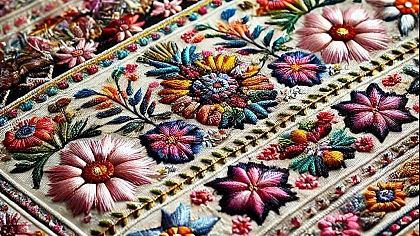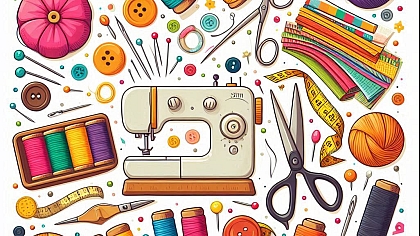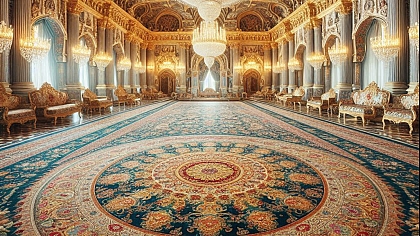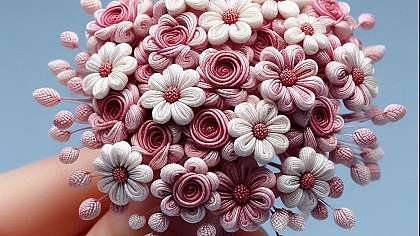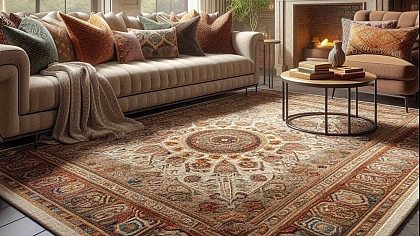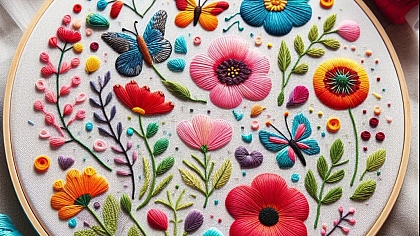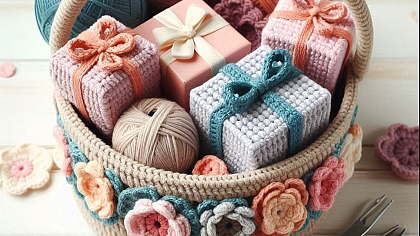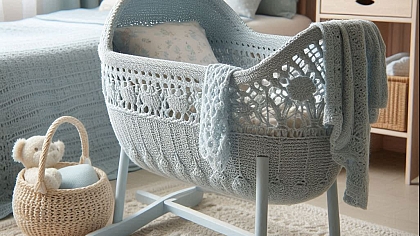
From Loom to Masterpiece: A Weaver's Journey
Exploring the Art and Craft of Weaving

Weaving is a time-honored craft that bridges the gap between artistry and functionality. From the selection of fibers to the rhythmic dance of threads on the loom, every step in a weaver's journey contributes to the creation of intricate textiles and timeless masterpieces. This article delves into the rich tapestry of weaving, unraveling the intricacies of the craft and celebrating the evolution from novice to master weaver.
Selecting the Perfect Fibers: The Foundation of Textile Artistry
The journey of a weaver begins with the selection of fibers, each possessing its own unique qualities and characteristics. Natural fibers like cotton, linen, and silk offer breathability and luster, ideal for garments and delicate textiles. Wool provides warmth and resilience, perfect for cozy blankets and rugs, while luxurious fibers such as alpaca and cashmere add a touch of opulence to woven creations.
Understanding yarn weight and texture is essential a fine yarn creates intricate patterns suitable for lightweight scarves and table linens, while bulkier yarns produce dense fabrics ideal for upholstery and wall hangings. Hand-dyed and artisanal yarns bring depth and nuance to woven designs, showcasing the weaver's artistic vision.
Mastering the Tools of the Trade: Looms, Shuttles, and Beyond

Central to the art of weaving is the loom a mechanical or hand-operated apparatus that holds the warp (longitudinal) and weft (horizontal) threads in tension. Looms range from portable frame looms for small-scale projects to towering floor looms capable of weaving expansive textiles. Each loom type offers its own advantages in terms of versatility, weaving speed, and the complexity of patterns achievable.
Shuttles, bobbins, and heddles are essential tools that facilitate the weaving process. Shuttles glide back and forth across the loom, carrying the weft yarn through the warp threads. Heddles manipulate the warp threads, raising and lowering them to create sheds through which the weft yarn is passed. Tensioning devices ensure even distribution of threads, essential for maintaining fabric integrity and pattern consistency.
Learning the Language: Patterns and Techniques
Weaving patterns are akin to musical scores structured sequences of warp and weft interlacements that form intricate designs and textures. Plain weave, the simplest pattern, alternates one warp thread over one weft thread, producing a balanced, durable fabric. Twill weaves create diagonal patterns, adding visual interest and texture, while satin weaves emphasize luster and smoothness.
Mastering weaving techniques requires understanding yarn interlacement, beat (the force with which weft yarn is packed into place), and warp tension. Advanced techniques like overshot, brocade, and double weave expand creative possibilities, enabling the weaving of complex motifs, layered textures, and reversible fabrics. Each technique demands precision and patience, rewarding the weaver with exquisite textiles imbued with craftsmanship.
Embarking on Projects: From Practice to Artistry
The journey from loom to masterpiece begins with practice and exploration. Novice weavers often start with simple projects scarves, placemats, and dish towels that hone basic skills in yarn handling, tension control, and pattern execution. As proficiency grows, weavers undertake more ambitious endeavors wall hangings adorned with intricate patterns, heirloom-quality blankets rich in color and texture, and garments tailored to fit with precision.
Each project presents challenges and learning opportunities. Warping the loom a meticulous process of threading hundreds or even thousands of warp threads—requires attention to detail and an understanding of pattern alignment. Weaving itself becomes a rhythmic meditation a dance of threads and patterns that transforms raw materials into functional art. Mistakes become lessons, fostering resilience and refining technique.
Exploring Advanced Techniques: Tapestry, Jacquard, and Beyond

Advanced weavers push boundaries with specialized techniques that elevate craftsmanship to new heights. Tapestry weaving, characterized by discontinuous weft threads and intricate pictorial designs, merges weaving with painting, creating narrative and expressive textiles. Jacquard looms employ punch cards or computerized controls to weave complex patterns and images with precision, revolutionizing textile production and design.
Inkle and tablet weaving employ narrow bands and cards or tablets to create intricate patterns and braids, perfect for straps, belts, and embellishments. Rug weaving emphasizes durability and texture, using robust fibers and pile techniques to create soft underfoot masterpieces. Each technique showcases the versatility of weaving as both an art form and a functional craft, bridging tradition with innovation.
Finding Inspiration: Nature, Culture, and Artistic Vision
Inspiration for weaving springs from myriad sources nature's palette inspires earth-toned tapestries and botanical motifs, while cultural traditions inform patterns and techniques passed down through generations. Art movements like abstract expressionism and geometric abstraction influence color choices, composition, and the interplay of positive and negative space in woven designs.
Personal experiences and journeys inform creative endeavors. Commissioned pieces celebrate milestones births, weddings, and anniversaries while collaborative projects with designers and artisans foster innovation and exchange. Weavers draw from historical textiles and contemporary art to create timeless pieces that resonate with beauty and meaning.
Sharing the Craft: Workshops, Guilds, and Digital Communities
Weaving is inherently communal, with weavers gathering at workshops, guild meetings, and fiber festivals to exchange ideas, techniques, and camaraderie. Local weaving guilds offer classes and resources for weavers of all skill levels, promoting education and skill development. Master weavers mentor apprentices, passing down knowledge and preserving traditional techniques for future generations.
Digital platforms extend the weaving community globally, connecting weavers through forums, social media groups, and online courses. Websites like Handweaving.net and Instagram showcase diverse weaving styles, inspire creativity, and facilitate collaboration across continents. Virtual exhibitions and digital publications celebrate contemporary weaving practices, fostering dialogue and appreciation for handcrafted textiles.
Preserving Tradition: Heritage and Artisan Excellence
Weaving holds a cherished place in cultural heritage, revered for its role in storytelling, identity, and community. Traditional patterns and techniques such as Navajo rug weaving, Scandinavian huck lace, and West African stripweaving reflect regional aesthetics, craftsmanship, and material culture. Indigenous weavers preserve ancestral knowledge, incorporating natural dyes and symbolic motifs into textiles that honor heritage and tradition.
Artisan excellence distinguishes handwoven textiles, celebrated for their quality, craftsmanship, and attention to detail. Handcrafted pieces convey a sense of authenticity and connection to the maker, enriching daily life with warmth, beauty, and functionality. Weavers continue to innovate and adapt, blending traditional techniques with contemporary design to create textiles that resonate with history and artistry.
In weaving, every thread tells a story, weaving together craftsmanship, creativity, and cultural heritage into timeless textiles that transcend generations. From loom to masterpiece, the weaver's journey is a testament to dedication, skill, and the transformative power of fiber and artistry.


